In today’s digital world, 3D rendering has become a cornerstone of design, marketing, and visualization, enabling artists, architects, and businesses to transform concepts into photorealistic images and animations. Whether you’re an aspiring 3D artist, a real estate professional, or simply curious about how digital visuals are created, understanding the fundamentals of 3D rendering is essential.
But how does 3D rendering actually work? What makes a rendering look real, and how can professionals optimize their workflow? This guide breaks down the core principles, the types of rendering, and the software tools used to bring designs to life.
If you’re looking to take your rendering skills to the next level, check out our expert 3D rendering tips to refine your techniques and create more impactful visuals.
Let’s dive into the world of 3D rendering—how it works, its applications, and where the industry is headed.
Key Takeaways
- 3D Rendering Defined: The process of converting a 3D model into a 2D image or animation using specialized software.
- Key Components: Modeling, texturing, lighting, rendering, and post-processing are essential steps in creating realistic visuals.
- Software & Tools: Popular options include Blender, SketchUp, Revit, 3ds Max, and Lumion, each suited for different industries.
- Rendering Methods: CPU rendering offers precision but is slower, while GPU rendering is faster and ideal for real-time applications.
- Industry Applications: Used in architecture, real estate, product design, gaming, and film to create photorealistic visuals.
- Rendering Speed Factors: Higher resolution and complex scenes require more computing power, which is why professionals use render farms for efficiency.
What is 3D Rendering and How Does it Work?

At its core, 3D rendering is the process of converting a digital 3D model into a realistic 2D image or animation. It’s the final step in bringing a concept to life, whether it’s an architectural design, a product visualization, or a full-scale virtual environment.
But how does 3D rendering actually work?
The process starts with a 3D model, typically created in software like SketchUp, Revit, or Blender. This model acts as a digital blueprint, defining the structure of the object or scene, but without the realism needed to make it look lifelike. That’s where rendering software comes into play. If you’re interested in the different tools available, check out our guide to the best free 3D rendering software for a full breakdown.
The Key Stages of 3D Rendering:
- Modeling: A 3D artist builds the object or scene using polygons or CAD-based design tools. Understanding the difference between 3D rendering vs. 3D modeling can help clarify how these two processes work together.
- Texturing: Materials like wood, glass, or metal are applied to surfaces to give them a realistic look.
- Lighting & Shadows: Light sources are positioned to create depth, reflection, and natural realism.
- Rendering Process: The software calculates how light interacts with materials to generate the final image.
- Post-Processing: Final touch-ups like color correction, depth of field, and contrast adjustments refine the output for photorealistic results. If you’re looking to take your renders to the next level, explore our guide on how to create high-quality photorealistic renders.
This calculation-heavy process can be done using CPU rendering (slower but detailed) or GPU rendering (faster, ideal for real-time visuals). The result? A hyper-realistic digital image that can be used for marketing, architectural presentations, or product launches.
Rendering has come a long way from its early days of hand-drawn perspectives and physical models. But how does digital rendering compare to traditional techniques? Let’s break it down
The rendering time can vary from a few seconds to several hours, depending on the complexity of the scene and the hardware being used. That’s why high-end studios often use render farms—networks of computers dedicated to rendering at scale.
Rodolpho Reis - Cheif Creative Office
Digital Rendering vs. Traditional Rendering: What’s the Difference?
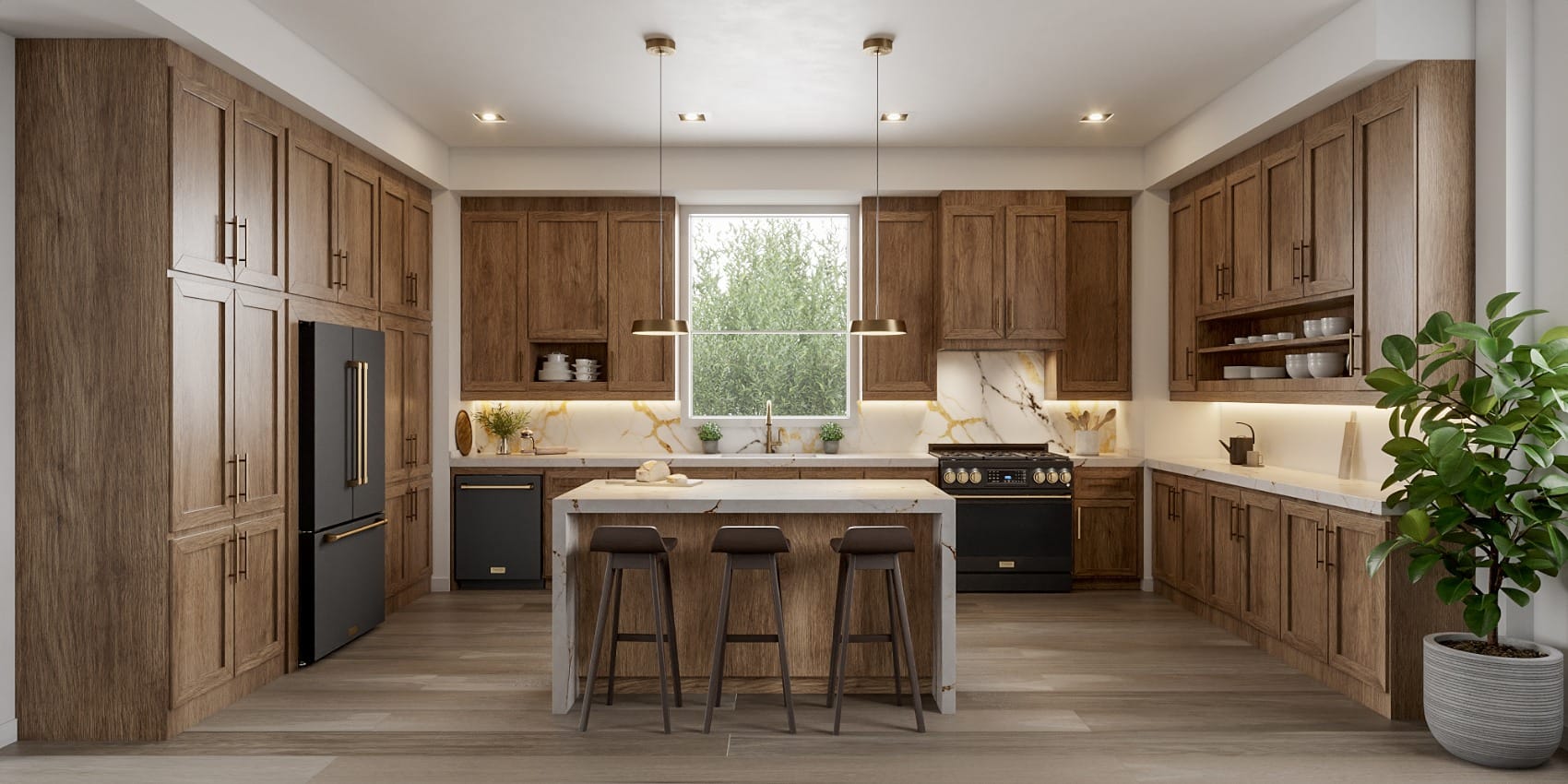
Rendering has been around for decades, but the way we create images has changed dramatically with digital technology. Before computers, rendering meant hand-drawn illustrations, airbrushed perspectives, or physical model photography. While these techniques still have their place in conceptual design, digital rendering has revolutionized the industry.
| Aspect | Traditional Rendering | Digital Rendering |
|---|---|---|
| Method | Hand-drawn, painted, or photographed | Created using 3D software & AI algorithms |
| Speed | Time-consuming, manual process | Faster with automation & computing power |
| Realism | Limited shading & perspective | Photorealistic lighting, reflections & textures |
| Flexibility | Difficult to edit once complete | Easily modified with software |
| Cost | Requires skilled artists & materials | More cost-effective in the long run |
Today, digital rendering is the standard across architecture, real estate, advertising, and gaming. With AI-driven enhancements and real-time rendering engines, the gap between digital and reality is closing faster than ever.
But it’s not just about speed—digital rendering allows for unlimited revisions, instant lighting changes, and even interactive 3D experiences, making it the preferred choice for modern designers and marketers.
What are the Types of 3D Rendering and How is 3D Rendering used?

There are different types of 3d rendering services available, catering to different industries and needs. Here are some of the most common types:
| Rendering Type | Description |
|---|---|
| Architectural Renderings | Used to create realistic 3D interpretations of buildings, interiors, and landscapes for architects, real estate developers, agents, and designers. |
| Product Renderings | Creates 3D interpretations of products for marketing, advertising, and design, including furniture, consumer goods, and industrial equipment. |
| Medical Rendering | Used to create 3D models of anatomical structures and medical devices for research, training, and education. |
| Animation Rendering | Transforms 3D renderings into full animations for real estate, video games, and the film industry. |
| Virtual Reality (VR) Rendering | Creates immersive 360-degree experiences for video games and real estate using VR headsets. |
| Augmented Reality (AR) Rendering | Creates 3D models overlaid onto real-world environments, allowing interaction with virtual objects. |
These are just a few examples of 3d rendering, and they can be used in many different areas and for many different purposes.
How is a 3D Rendered Image Generated?
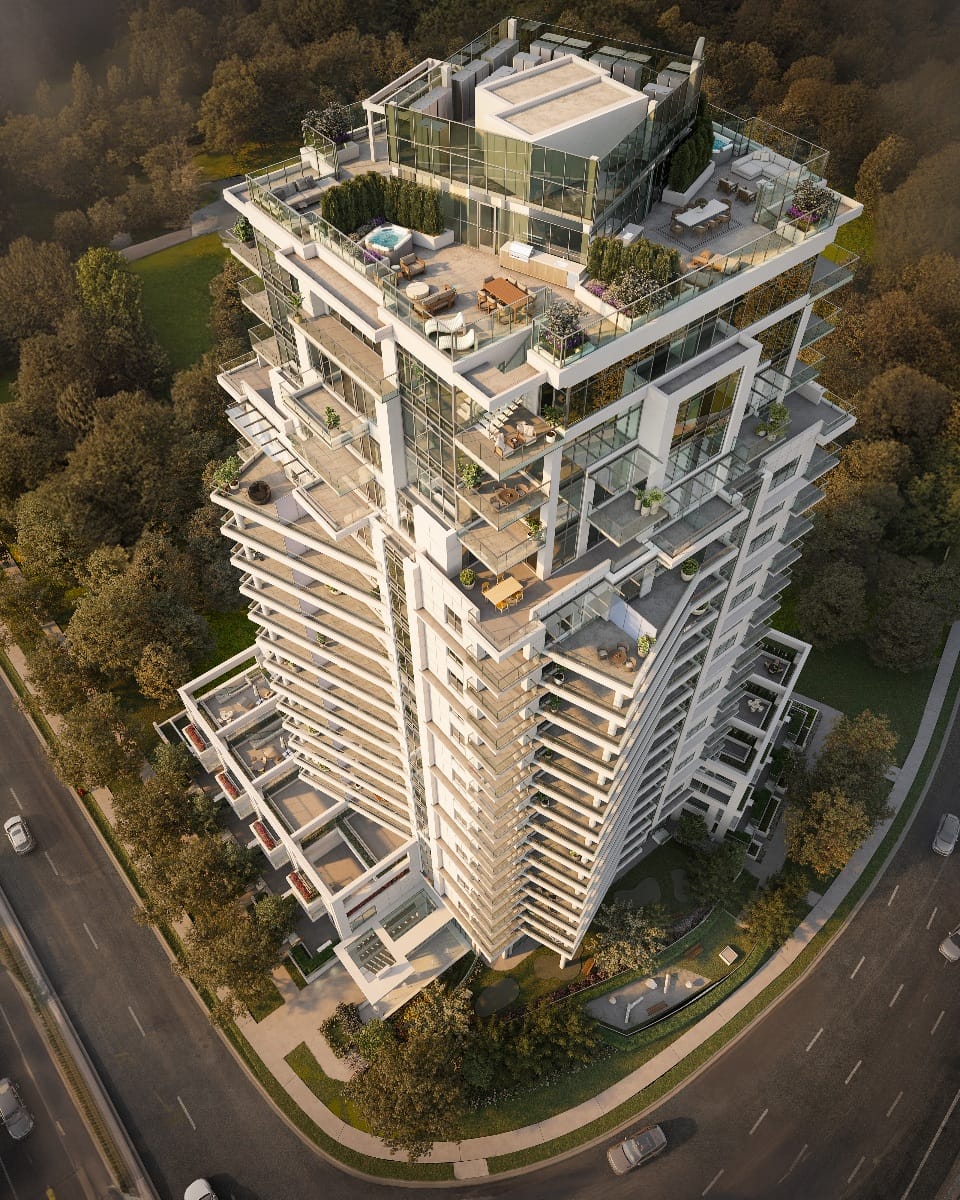
Generating a 3D rendered image involves a process comprised of several steps.
Firstly, a 3D model of the object or scene is created using specialized software, after which the scene is set up with lighting, textures, and materials.
After this, the scene is ‘rendered’ with the software, which results in the creation of an image.
A final step is post-processing, where effects such as depth of field, motion blur, or color correction may be added in order to increase the visual impact/aesthetic of the image or to achieve a certain mood.
Although the process of generating a 3D rendered image can be complex, time-consuming and takes time to master, it allows for highly realistic and accurate representations of objects and scenes.
Understanding the Importance of Resolution in 3D Rendering
Rendering resolution is a critical factor in the world of 3D rendering, referring to the level of detail and clarity in the final rendered image or animation.
It determines the number of pixels or points that make up the image, with higher resolutions yielding more intricate and realistic visuals.
A higher rendering resolution allows for sharper textures, smoother edges, and more precise lighting and shadows.
However, it also requires more computational power and longer rendering times. Choosing the appropriate rendering resolution is a crucial decision that impacts the quality and performance of the final output, making it a key consideration for 3D artists and designers seeking to achieve visually stunning renders.
Uses of 3D Rendering by Industry
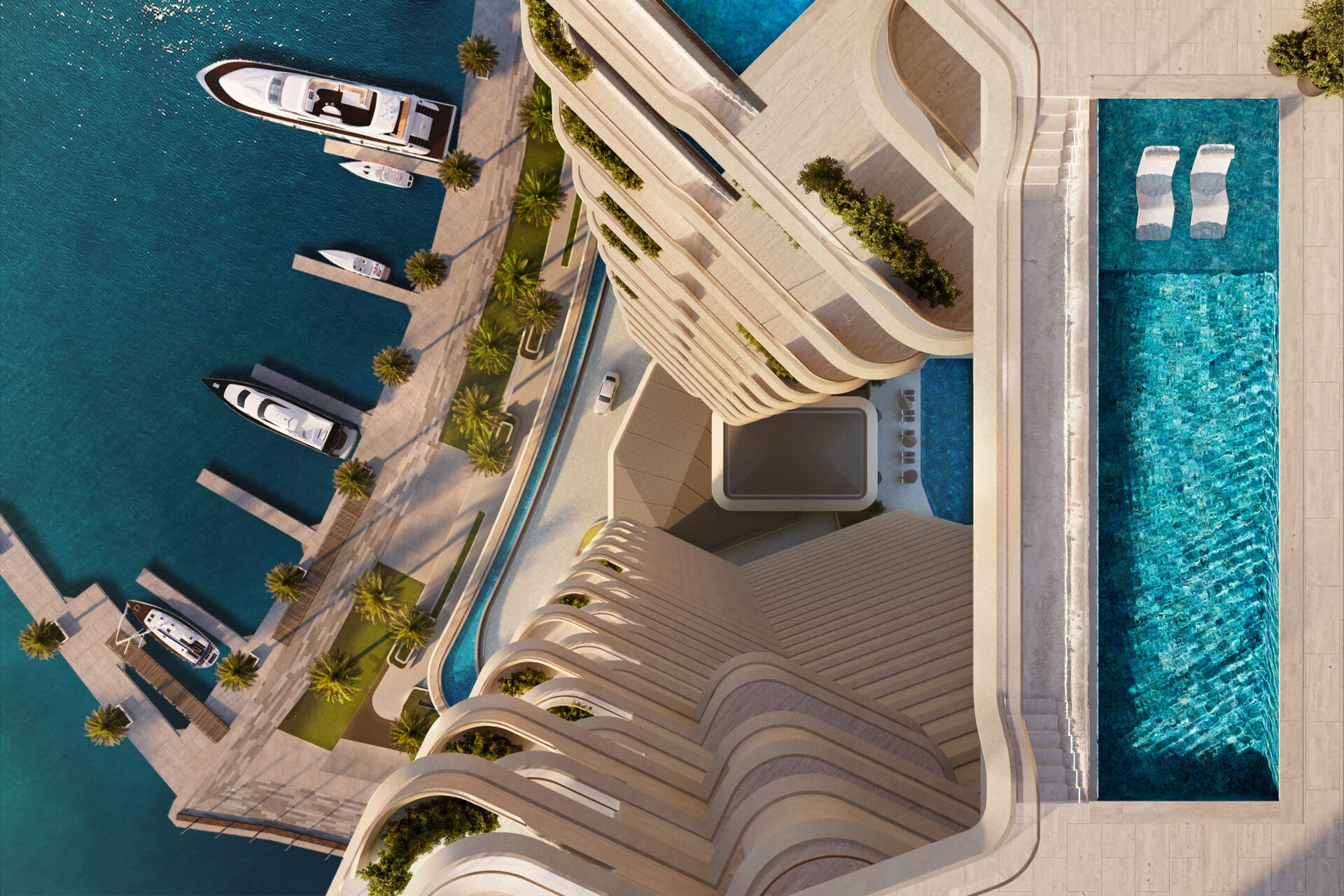
If you’re interested in delving deeper into the world of architectural visualization and considering a career in this field, there are numerous online resources available to assist you in your journey.
In the entertainment industry, 3d rendering is primarily used for visual effects in films, tv and video games, allowing for the creation of a highly realistic 3d environment that would be difficult to achieve in real life, as well as creating characters and objects. Many classic films and tv shows have used these techniques, such as Toy Story, Avatar and Game of Thrones.
Architecture and Design
3D rendering is a valuable tool in architecture, commonly utilized to aid in visualizing designs and presenting them to clients and stakeholder. 3d architecture renderings have several benefits for architects, to name a few – identify and correct potential design issues before construction, improve communication with your clients and create effective presentations.
Real Estate & Construction
Just like for architecture, 3d rendering has become an indispensable tool in the real estate industry, particularly for pre-selling and marketing properties. With the ability to provide buyers with a realistic visualization of a property’s final appearance, 3D rendering simplifies the process of selling a property before it’s completed. Moreover, developers can employ renderings to obtain planning permission for new constructions, making the process much easier.
Interior Design
Much like architects, interior designers also rely on 3D interior renderings to visualize and conceptualize a space before construction begins. This powerful tool enables them to communicate their design concepts to clients in a more impactful manner compared to conventional methods such as hand sketches and moodboards. Additionally, 3D Interior Renderings assist in identifying any design errors or improvement areas early in the process, allowing for more efficient and effective design iterations during the pre-construction phase.
Advertising and Marketing
Renderings are frequently the centerpiece of any real estate marketing campaign, thanks to their striking visual impact, meaning that they’re crucial for real estate marketers. Whether they’re featured in brochures, websites, or large-scale prints, renderings are widely employed by marketers to showcase the unique features of a property and help with their sales/advertising campaigns.
Video Games
In video games, 3D rendering is a critical technology used to produce captivating and realistic environments, characters, and objects. It allows game developers to generate highly intricate and lifelike graphics that enhance the player’s overall gaming experience and is an essential component of video game creation.
3D Rendering Software Overview
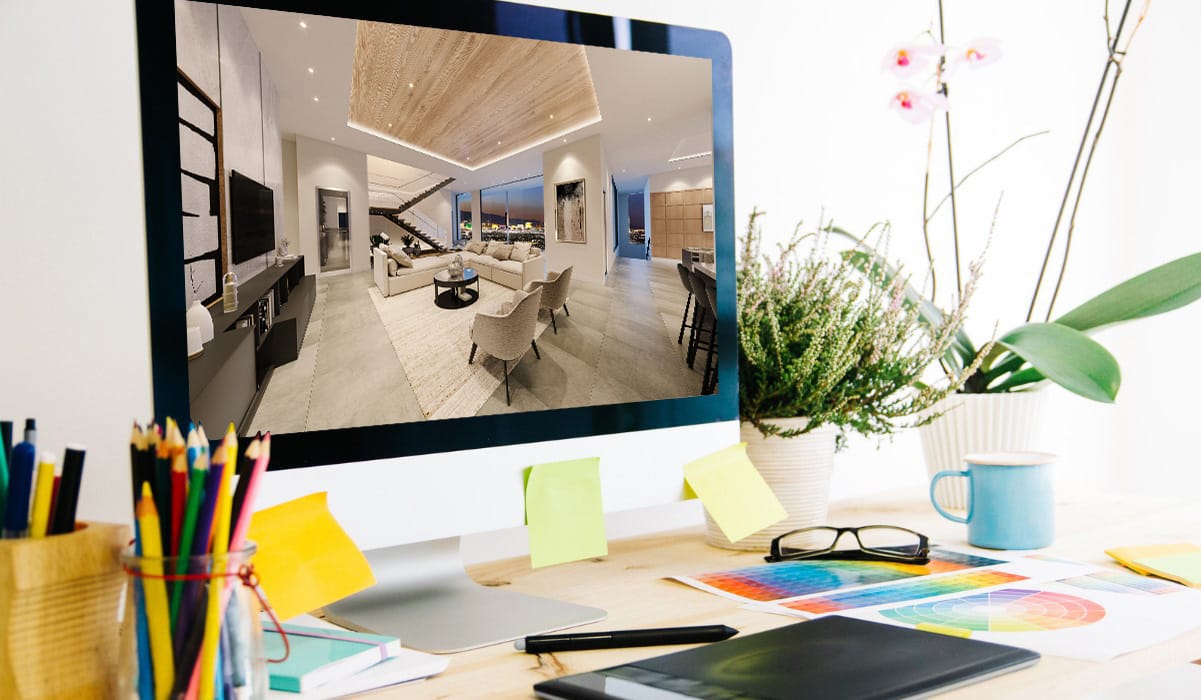
There is a wide range of 3d rendering software available for basic rendering & 3D rendering, each with their own strengths and weaknesses depending on the specific needs of the user. In this section, we will provide a concise overview of the most popular software options in the industry.
- 3Ds Max – Autodesk’s 3ds Max software is a popular and advanced tool among renderings professionals and Its uses range from creating images for architecture and interior design to movies and games. While it has a steep learning curve, the software’s numerous resources, plugins, and add-ons make it a common choice among professionals.
- Lumion – Another Popular choice amongst architects, and Lumion has quickly become one of 3D Studio Max’s primary competitors, boasting an intuitive interface, fast rendering speeds, its own native renderer, and a massive content library and a range of tools that allow users to showcase their work creatively.
- Sketchup – Mainly used by architects, Sketchup is a popular software due to its ability to deliver satisfactory results quickly, especially for smaller projects. Despite its limitations in terms of workflow and image quality, SketchUp is commonly used due to its competitive pricing, ease of use and learning, and access to a great free library of 3D models, along with its large community.
These are just 3 of the most popular options but If you’re interested in gaining a deeper understanding of the different types of software available, here’s a couple of useful links below:
Factors Affecting 3D Rendering Times: Understanding How Long It Takes to Render

The duration of a 3D render can vary greatly depending on the complexity of the scene, the level of detail desired, and the hardware and software used for rendering.
One common question often asked is, “How long does it take to 3D render a home?” The answer can range from a few minutes to several hours or even days. Simple scenes with basic lighting and minimal textures may render relatively quickly, while more intricate scenes with complex lighting, high-resolution textures, and realistic materials may require significantly more time.
Additionally, the hardware specifications of the rendering workstation, such as the processor speed, GPU performance, and amount of RAM, can greatly affect rendering times. Efficient rendering techniques, such as using render farms or distributed rendering, can also significantly reduce rendering times.
Overall, the time taken for 3D rendering depends on numerous factors, and it’s essential to plan accordingly to meet project deadlines and achieve the desired level of quality.
Skills Required to Become a Professional 3d Renderer

For those of you curious about learning more about pursuing a career in architectural renderings, you’ll be happy to know that there are plenty of online resources that can help you do so. Becoming a high quality 3D Artist is something that takes times and dedication, and there is a certain skill set required, for which you can find a brief list below:
- Strong foundation in 3D modeling software such as 3ds Max, Maya or Blender
- Knowledge of rendering plugins such as V-Ray and Corona
- Good Understanding of lighting and shading techniques
- Ability to create and apply textures and materials
- Understanding of composition, color theory, and design principles
- Proficiency in post-processing software such as Photoshop or After Effects
- Ability to work with technical specifications and adhere to project deadlines
- Continuous learning and adaptability to new technologies and techniques.
If you have interest in learning more about how to pursue a career in architectural visualization, here are a few useful resources to help you initiate your training:
1️⃣ How to Become a Successful 3D Artist in 6 Months – Ideal for career-focused discussions on building 3D rendering skills quickly.
2️⃣ How to Become a Freelance 3D Modeler and Find Remote Work – Best for content discussing freelancing in 3D modeling and remote job opportunities.
3️⃣ Building a Career in Architectural Visualization – Perfect for discussions on breaking into the architectural visualization industry.
4️⃣ A Career in Architectural Visualization: What You Need to Know – Great for content exploring job prospects, required skills, and career paths in architectural visualization.
The Future of 3D Rendering
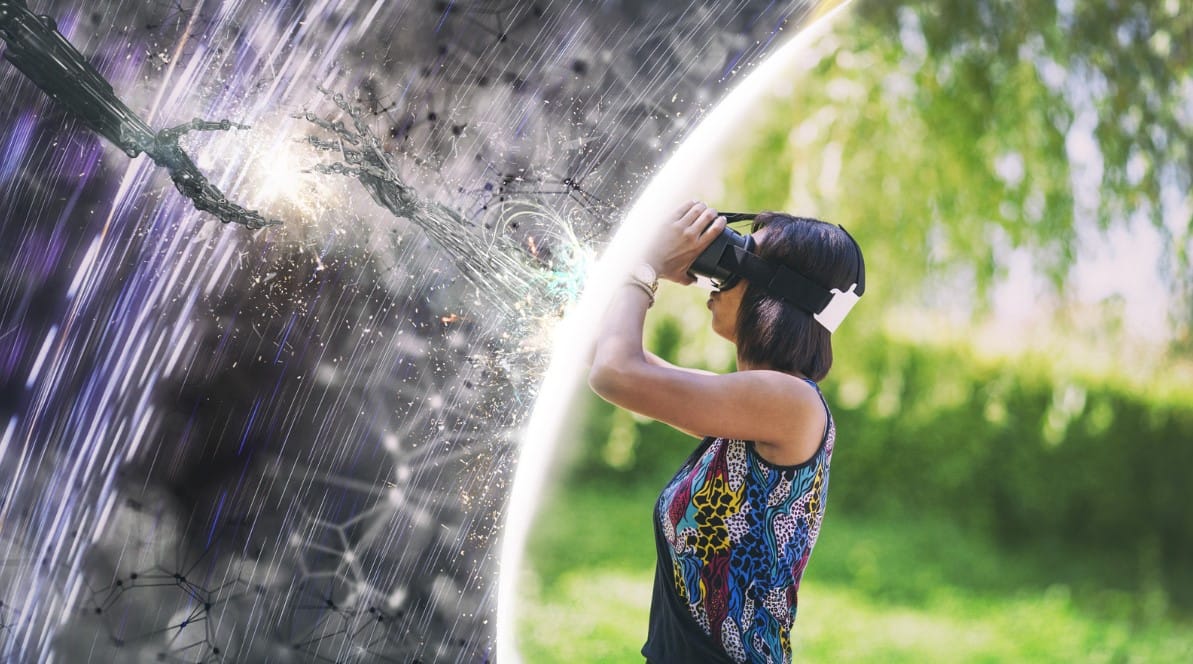
Over the past few decades, technological advancements have transformed 3D rendering, making it more powerful, efficient, and accessible. As innovation continues, we are entering an era where AI, real-time rendering, and immersive technologies will redefine how we visualize and interact with 3D content.
AI-Powered 3D Rendering
One of the biggest shifts in 3D rendering is the integration of artificial intelligence (AI) into the workflow. Tools like Midjourney, DALL·E, and Stable Diffusion are already generating conceptual visuals based on text prompts, allowing artists and designers to rapidly iterate on ideas. AI-powered rendering engines are also helping to automate tasks like material application, lighting adjustments, and noise reduction, significantly speeding up the rendering process.
While AI enhances efficiency, human creativity and expertise remain essential. AI can assist with rendering, but fine-tuning details, artistic direction, and storytelling will continue to be driven by skilled 3D artists and architects. The future lies in AI-assisted workflows, where automation handles the technical aspects, freeing up professionals to focus on design and creative refinement.
Real-Time Rendering & Interactive Experiences
With the rise of real-time rendering engines like Unreal Engine, Lumion, and Enscape, architects and designers can now visualize projects instantly, rather than waiting hours for a final render. This allows for dynamic client presentations, where materials, lighting, and layouts can be adjusted on the fly.
In real estate and architecture, real-time VR tours are becoming a game-changer. Prospective buyers and investors can explore unbuilt properties in full detail, gaining a realistic sense of scale, texture, and atmosphere before construction even begins. As hardware and software improve, rendering times will shrink further, making real-time photorealistic visualization the new standard.
Augmented Reality (AR) & Mixed Reality (MR) in 3D Rendering
Augmented reality (AR) is bridging the gap between digital and physical environments, allowing architects and designers to overlay 3D models onto real-world spaces. With tools like Apple’s ARKit, Microsoft’s HoloLens, and Meta’s AR platforms, clients can visualize projects at scale, in their actual surroundings, providing a more immersive decision-making experience.
Key applications of AR in architectural visualization:
- Clients can walk through a property before it’s built, seeing how furniture, lighting, and materials fit in real-time.
- Designers can modify structures on-site, making real-time adjustments to layouts and elements.
- Construction teams can use AR overlays for precise alignment, improving project accuracy.
As AR technology becomes more advanced and accessible, we can expect it to play a larger role in architectural visualization, blurring the lines between digital concepts and real-world spaces.
Conclusion
3D rendering has become an essential tool across industries, from architecture and real estate to gaming, product design, and advertising. By transforming digital models into photorealistic visuals, it allows designers, marketers, and businesses to present ideas with precision and impact.
As technology advances, AI-driven automation, real-time rendering, and immersive AR/VR experiences are reshaping how 3D visuals are created and consumed. While these innovations enhance efficiency, human creativity remains irreplaceable, ensuring that artistic vision and storytelling continue to drive the industry forward.
Whether you’re an aspiring 3D artist, architect, or business looking to leverage high-quality renderings, staying informed about new tools and techniques will be key to success in this evolving landscape. As rendering capabilities expand, so do the possibilities for bringing ideas to life in ways never seen before.
See how foundational rendering techniques translate into real results in our Luxury Home Design Renderings in Nevada case study.
FAQs
Computer rendering is the process of using software and hardware to generate digital images from 3D models. It’s what allows us to create photorealistic visuals for architecture, movies, video games, and product design.
Unlike hand-drawn illustrations, computer rendering uses algorithms to simulate how light interacts with objects. The computer calculates reflections, shadows, textures, and depth to produce a lifelike image.
There are two main types of computer rendering:
- Real-Time Rendering: Used in video games & VR, where frames are generated instantly for interactive experiences.
- Offline Rendering: Used in films, architectural visualization, and advertising—where quality is prioritized over speed.
CPU vs. GPU Rendering:
- CPU Rendering is detailed but slow, great for static high-resolution images.
- GPU Rendering is faster, making it ideal for animations & real-time applications.
Every 3D image you see—whether in a movie, a video game, or an architectural pitch deck—has been rendered by a computer using complex mathematical calculations to mimic the real world.
3D modeling is an essential precursor to creating renderings, and firstly involves creating a basic shape using polygons, curves and other modeling techniques, after which the model is refined and layers of detail are added. Once this is done the rendering process can begin, where textures, colors and materials are added to the model, followed by the creation of a 2d image.
For more information on 3d modeling, check out our post on architectural 3d modeling
CAD (Computer Aided Design, is the process of creating accurate 3d models with the main focus of achieving a high level of technical accuracy and precision when it comes to measurements and dimensions. These models are then used for architectural and engineering purposes.
The final product of CAD is technical drawings (not renderings) but these can then be used to create 3d renderings as they help massively when building out a 3d model. Whereas CAD is typically used to help construct a project, 3d rendering is used more on the sales and marketing side.
For more info on CAD , check out our guide on CAD interior design
CPU and GPU are both important for 3D rendering, but the specific hardware requirements will depend on the software being used and the complexity of the rendering task. CPUs are better suited for tasks that require sequential processing such as scene preparation, lighting calculations, and geometry processing while GPUs are better suited for tasks that require parallel processing, such as rendering large amounts of image data.
3D rendering can be a challenging and complex process, but it ultimately depends on the specific project, the level of detail required and your clients needs. Creating a photorealistic image which needs to follow strict architectural specifications takes much more skill than creating a lower quality image that doesn’t need to follow a specific design, and having to do this under a tight deadline makes the process noticeably more difficult. Also, some types of software are easier to master than others, so this is an important factor to consider.
Ready to Elevate Your Project with Stunning Visualizations?
Discover how our 3D architectural flythroughs and walkthrough animations can bring your exterior designs to life. Our expert team creates visuals that impress stakeholders, secure approvals, and make your project stand out.







